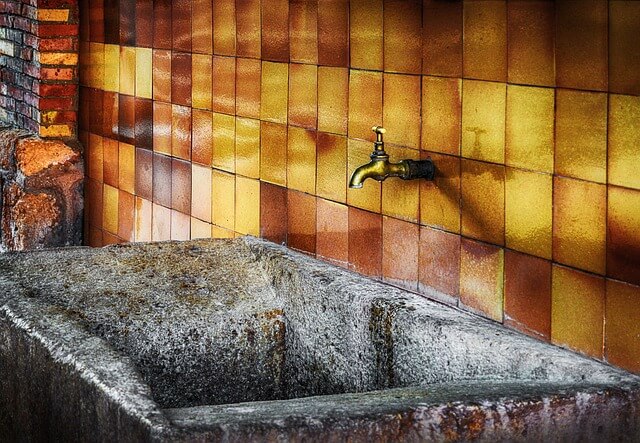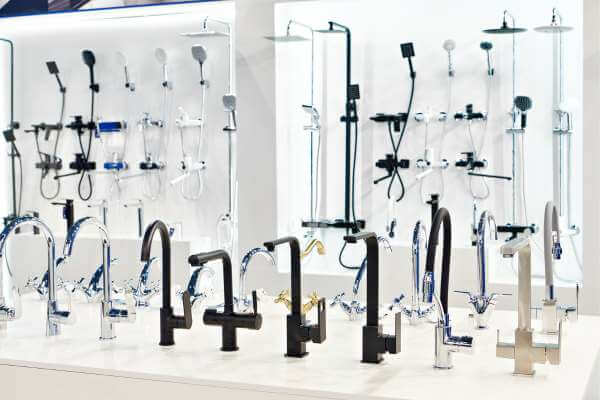Laundry Faucet vs Kitchen Faucet: Faucets are essential fixtures in both our kitchens and laundry rooms, providing us with water for various tasks. While they may seem similar at first glance, kitchen faucets, and laundry faucets serve distinct purposes and are designed to meet different needs. In this article, I’ll explore the key differences between these two types of faucets to help you understand which one suits each area of your home.
Laundry Faucet vs Kitchen Faucet
1. Functionality:
The primary difference between kitchen faucets and laundry faucets lies in their intended functionality.
Kitchen Faucets: Kitchen faucets are designed with versatility in mind, catering to various tasks beyond basic water supply. They come equipped with features like a swiveling spout, which allows you to direct the water flow conveniently. Kitchen faucets often have different spray modes, such as stream and spray, to facilitate dishwashing and cleaning. Some high-end models even include touchless technology or pull-out/pull-down sprayers for added convenience.
Laundry Faucets: Laundry faucets, on the other hand, are more straightforward and utilitarian. Their main function is to provide water for laundry-related tasks, like filling up the washing machine, handwashing clothes, or rinsing items. They typically have a basic spout design with a single water flow mode, making them practical for laundry room use.
2. Size and Design:
Due to their differing purposes, kitchen faucets and laundry faucets also vary in size and design.
Kitchen Faucets: Kitchen faucets are generally larger and more visually striking to complement the overall design of the kitchen. They come in a wide range of styles, finishes, and shapes, allowing homeowners to match them with their kitchen decor. Additionally, some kitchen faucets have a taller height to accommodate larger pots and pans for easy filling and cleaning.
Laundry Faucets: Laundry faucets, being more straightforward, are usually more compact and have a more basic design. They are often wall-mounted to save space and keep the laundry area uncluttered. Laundry faucets are available in standard finishes like chrome or stainless steel, offering a clean and practical look for the laundry room.
3. Durability and Material:
Both kitchen and laundry faucets should be durable, but the materials used can vary.
Kitchen Faucets: Kitchen faucets are built to withstand more frequent and intense use. They are commonly made from high-quality materials like stainless steel or solid brass, which are resistant to corrosion and wear. The added durability ensures that kitchen faucets can handle constant exposure to water, cleaning agents, and heavy use without deteriorating quickly.
Laundry Faucets: While laundry faucets also need to be sturdy, they may not be subjected to the same level of wear and tear as kitchen faucets. As a result, laundry faucets are typically constructed from durable materials like chrome-plated brass or zinc. These materials provide ample strength and corrosion resistance for laundry-related tasks.
FAQ
Can you use a laundry faucet in the kitchen?
Using a laundry faucet in the kitchen is technically possible, but it is not recommended for several reasons. While both laundry faucets and kitchen faucets supply water, they are designed with different functionalities and features to meet the specific needs of their respective areas.
Here are some reasons why using a laundry faucet in the kitchen may not be ideal:
- Size and Design: Laundry faucets are typically smaller and more basic in design compared to kitchen faucets. They may not have the height or reach required to accommodate larger pots, pans, and dishes commonly used in the kitchen. This can make tasks like filling large cooking vessels or cleaning up after cooking more challenging.
- Water Flow and Features: Kitchen faucets often come with additional features like different spray modes, pull-out or pull-down sprayers, and touchless technology. These features are specifically designed to enhance the functionality of the kitchen faucet for tasks like washing vegetables, cleaning dishes, and filling water containers. A laundry faucet may lack these features, making it less convenient for kitchen use.
- Aesthetics: Kitchen faucets are designed to be visually appealing and complement the overall design of the kitchen. They come in a variety of styles, finishes, and designs to match various kitchen decors. Using a laundry faucet in the kitchen might not provide the same aesthetic appeal or cohesive look that a dedicated kitchen faucet would.
- Durability: Kitchen faucets are engineered to withstand the heavy usage that a kitchen typically experiences. They are made from durable materials that can resist corrosion and wear. On the other hand, laundry faucets may not be built to handle the same level of use, which could lead to premature wear and potential issues down the line.
- Plumbing Considerations: Laundry faucets are often designed to be wall-mounted, while most kitchen faucets are deck-mounted (installed on the countertop or sink). If you were to use a laundry faucet in the kitchen, it might require modifications to the plumbing, which could be costly and may not yield the desired results.
What kind of faucet do I need for a laundry sink?
Laundry faucets are distinct from standard kitchen or bathroom faucets in several ways. They feature a smaller diameter and are designed with the water inlets placed closer together. These faucets typically come with dual knob handles, allowing precise temperature adjustment. Additionally, laundry faucets boast durable threading that enables easy attachment of a garden hose, adding to their practicality and versatility.
Does a laundry sink need a vent?
Every plumbing fixture in your home, including washing machines, requires proper venting. When drains are not adequately vented, you may experience slow drainage, noisy pipes, and the potential release of dangerous fumes. Proper venting ensures that the P-trap, which blocks sewer gases, functions effectively and prevents these unpleasant odors from entering your living space.
Conclusion
In conclusion, Laundry Faucet vs Kitchen Faucet: kitchen faucets and laundry faucets are distinct in their functionality, size, design, and material. Choosing the right faucet for each area of your home is crucial to ensure optimal performance and aesthetics. Select a kitchen faucet that not only matches your kitchen’s style but also offers the features you need for your cooking and cleaning tasks. For your laundry area, opt for a laundry faucet that is durable, easy to use, and complements the utilitarian nature of the space.


 Hi, my name is Debra Klein and I love modern kitchen designs! As a product reviewer, it’s my mission to help homeowners choose the right modern kitchen accessories for their homes. I want to give them the best solution possible so they can make the best decision for their needs. Thanks for reading!
Hi, my name is Debra Klein and I love modern kitchen designs! As a product reviewer, it’s my mission to help homeowners choose the right modern kitchen accessories for their homes. I want to give them the best solution possible so they can make the best decision for their needs. Thanks for reading!




